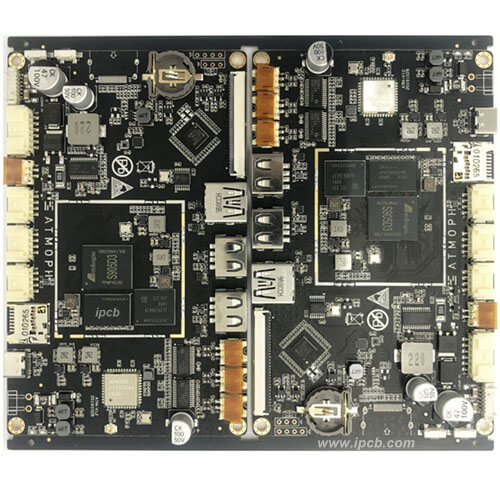Everyone knows that the circuit board is prone to board bending and board warping in the reflow furnace. How to prevent the PCB board from bending and board warping in the reflow furnace, the following Longhai Circuit Board Factory will explain for you:
1. Increase the thickness of the PCB circuit board
In order to achieve the purpose of lighter and thinner for many electronic products, the thickness of the board has left 1.0mm, 0.8mm, or even 0.6mm. Such a thickness must keep the board from deforming after the reflow furnace, which is really difficult. It is recommended that if there is no requirement for lightness and thinness, the thickness of the board should be 1.6mm, which can greatly reduce the risk of bending and deformation of the board.
2Reduce the size of the printed circuit board and reduce the number of puzzles

Since most of the reflow furnaces use chains to drive the circuit board forward, the larger the size of the circuit board will be due to its own weight, dent and deformation in the reflow furnace, so try to put the long side of the circuit board as the edge of the board. On the chain of the reflow furnace, the depression and deformation caused by the weight of the circuit board can be reduced. The reduction in the number of panels is also based on this reason. That is to say, when passing the furnace, try to use the narrow edge to pass the furnace direction as far as possible. The amount of depression deformation.
3. Use Router instead of V-Cut's sub-board
Since V-Cut will destroy the structural strength of the panel between the circuit boards, try not to use the V-Cut sub-board or reduce the depth of the V-Cut.
4. Reduce the influence of temperature on PCB board stress
Since "temperature" is the main source of board stress, as long as the temperature of the reflow oven is lowered or the rate of heating and cooling of the board in the reflow oven is slowed, the occurrence of plate bending and warpage can be greatly reduced. However, other side effects may occur, such as solder short circuit.
5. Use high Tg plates
Tg is the glass transition temperature, that is, the temperature at which the material changes from the glass state to the rubber state. The lower the Tg value of the material, the faster the board starts to soften after entering the reflow oven, and the time it takes to become soft rubber state It will also become longer, and the deformation of the board will of course be more serious. The use of a higher Tg sheet can increase its ability to withstand stress and deformation, but the price of the material is relatively high.
The narrow side is perpendicular to the furnace passing direction, which can achieve the lowest amount of depression deformation.
6. Used furnace tray fixture
If the above methods are difficult to achieve, the last is to use reflow carrier/template to reduce the amount of deformation. The reason why the reflow carrier/template can reduce the bending of the plate is because it is hoped whether it is thermal expansion or cold contraction. The tray can hold the circuit board and wait until the temperature of the circuit board is lower than the Tg value and start to harden again, and it can also maintain the original size.
If the single-layer pallet cannot reduce the deformation of the circuit board, a cover must be added to clamp the circuit board with the upper and lower pallets. This can greatly reduce the problem of circuit board deformation through the reflow furnace. However, this furnace tray is quite expensive, and manual labor is required to place and recycle the trays.